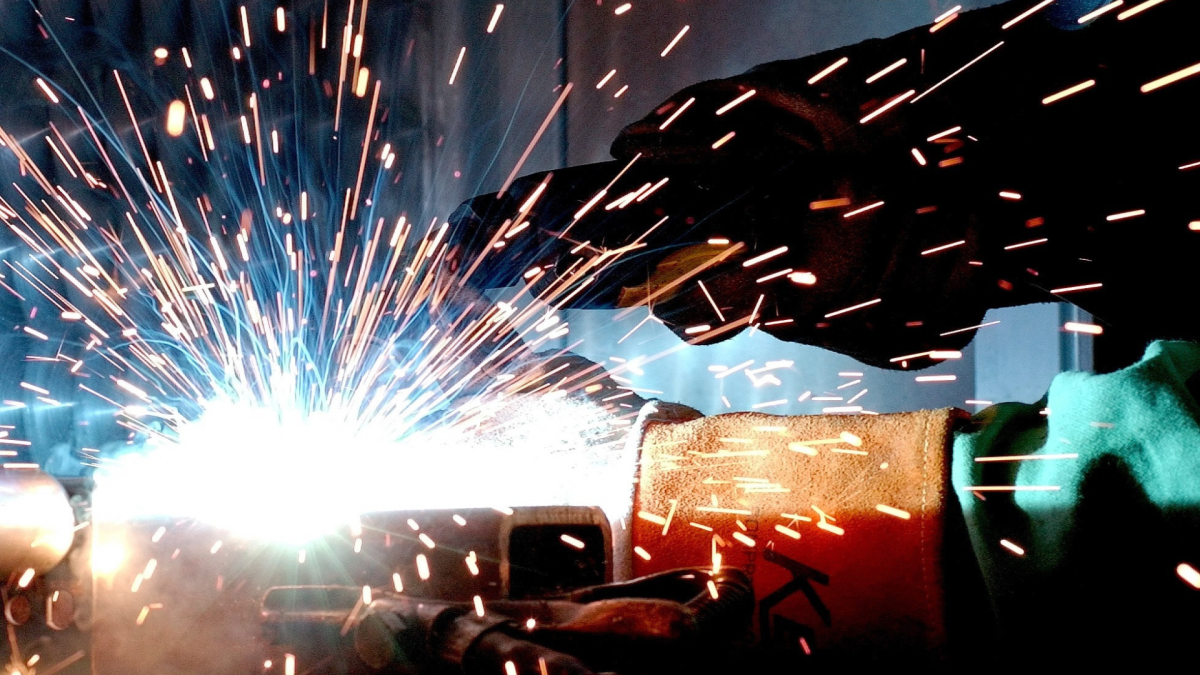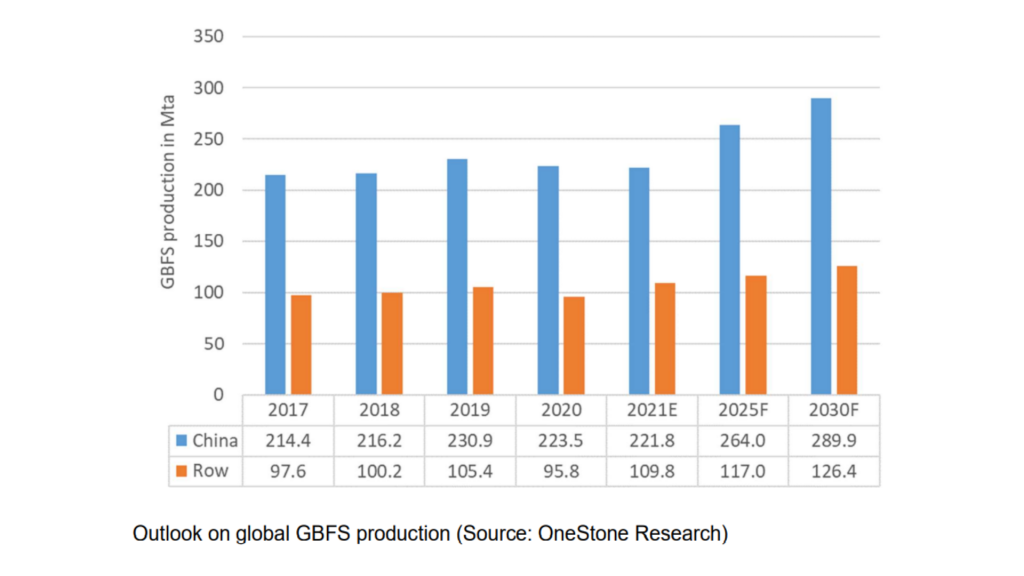
Supplied by OneStone Consulting
OneStone Consulting Ltd. released a new Market Report on the future of granulated blast furnace slag (GBFS) with unmatched information on the production and utilisation of this type of cementitious material.
- The iron & steel industry is in a transition to low-carbon steelmaking. There are some industry sources, which suggest that already in a few years with the elimination of blast furnaces the availability of granulated blast furnace slag (GBFS) will significantly decline, globally.
- However, the truth is that the restructuring of the steel industry will come in cycles starting in W.-Europe and other developed regions before it is implemented in developing countries. As a result, BF/BOF steelmaking, which relies on iron ore, will continue to be the dominant processing route for the manufacture of steel.
- Taking such industry trends into account the global pig iron production will increase from 1350 Mta in 2021 to 1384 Mta in 2025 and 1403 Mta by 2030.
- Due to a higher pig iron production and increasing slag rates the global blast furnace slag (BFS) production will increase from 383.0 Mta in 2021 to 418.8 Mta in 2025 and 445.6 Mta by 2030.
- Another effect is that the granulation rate for BFS will increase from today 86.5% (worldwide) to 93.4% by 2030.This will increase the global GBFS production from 331.5 Mta in 2021 to 381.2 Mta in 2025 and 416.4 Mta by 2030.
- Many world regions will become GFBS exporters. Accordingly, there should be enough GBFS available for imports and to substitute fly ash in cement and concrete, also in the EU 27, where GBFS will decline by almost 30%.
- There are industry sources predicting BF in combination with CCUS will be the technology of the future in the steel industry, resulting in an even higher availability of GBFS.
OBJECTIVE
The objective of the report is to provide accurate information about all aspects of the production and utilisation of granulated blast furnace slag (GBFS), worldwide. This in-depth market report is to understand the market dynamics and trends in the industry (steel, cement, concrete) and how this will affect the availability and the demand for GBFS country by country.

SCOPE OF SUPPLY
The market report provides detailed market information on the production of BF slag, GBFS, slag rates, GBFS consumption, imports and exports. The time period is from 2017 to 2021 with an outlook for 2025 and 2030 for 108 countries. Beside this information the report provides plentiful of information such as the steel and cement
industry development, major market trends in those industries, producers of GBFS, GBFS trading companies, market shares of suppliers for slag granulation systems, market shares for slag grinding mills and an outlook for slag granulation systems and slag mills by 2030.
METHODOLOGY
We provide up-to-date and independent market research, which is second to none. All data has been sourced through both primary and secondary research. Our close contacts to industry experts such as slag producers, GBFS trading companies, GFBS consumers in the cement and concrete industries, slag associations, as well as quipment suppliers, investors and analysts is our base for receiving the most reliable and trusted data.
More news
- PART 2: CONCRETE IN THE DESIGN OF A UNIQUE LUXURY HOME IN GEORGE, SOUTH AFRICA
- PART 1: CONCRETE IN THE DESIGN OF A UNIQUE LUXURY HOME IN GEORGE, SOUTH AFRICA
- MVULE GARDENS, AFRICA’S LARGEST 3D-PRINTED AFFORDABLE HOUSING PROJECT
- PART 3: HARNESSING THE POTENTIAL OF HIGH SULPHUR FLY ASH IN CONCRETE PRODUCTION
- PART 2: HARNESSING THE POTENTIAL OF HIGH SULPHUR FLY ASH IN CONCRETE PRODUCTION

